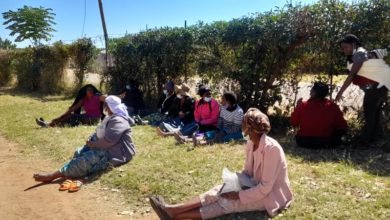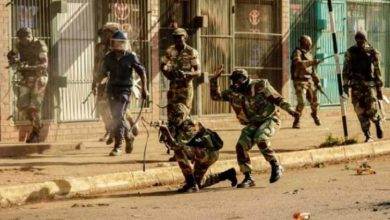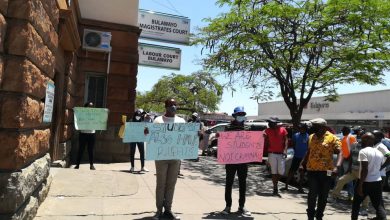90% foreign currency trading on official market, claims Prof Ncube

Finance and Economic Development Minister, Professor Mthuli Ncube claims the bulk of foreign currency in the country is now traded on official channels denting demand for the parallel market.
According to Prof Ncube, 90 percent of forex is sold at the weekly exchange auction markets that replaced the interbank market.
Analysts, however, refute these claims saying Zimbabwe’s economy is largely informal and it is impossible that only 10 percent circulates in the black market, which is seemingly thriving seen by the demand for money changers.
The official exchange rate at 84 per US dollar, remains below the parallel rate that runs between 100 and 110 per US dollar depending on the method of payment.
Authorities have promised to deal with money changers but stand accused of failing to carry out enforcement while it has been alleged some bigwigs and the politically-connected provide money that circulates on the streets.
“Look, we’ve come a long way on the issue of trading in the parallel market. There was a time when the premium between parallel rates and the official bank rates, of the order of 300 percent, was three times more. You recall that time? Where are we now? I would say we are now within a 30 to 40 percent range. That’s where we are now,” said the finance minister in Bulawayo recently.
Prof Ncube insists most of the foreign currency trading was now done formally.
“The bulk of the foreign currency in Zimbabwe, I would say 90 percent is sold at the official rate. Only a very small amount is sold at other rates other than the official rate. Those are the facts because the official foreign currency is coming from the auction,” he said.
“The other source is also coming from the banks directly, Some of it is coming from the individual FCA accounts that are held in the banks. So the bulk of the economy is operating on the official exchange rate. Those are the facts. So our focus is stability, rather than the gap.”
The finance minister insisted the official exchange rate in terms of the auction is very stable, as authorities were focused more on stability, rather than the gap between the official and the parallel rate.
“Look, we cannot as government converge with the parallel rate. No. You don’t know who you are converging with – someone in the corner then you want to converge with that person in terms of their exchange rate. No, we cannot do that,” he said.
Prof Ncube noted that measures taken by the government such as introducing ‘bureau de changes’ had helped in the availability of foreign currency.
“For example, in making sure that citizens can now access small amounts of foreign currency through bureaus might just work but we will evaluate, see and fine tune. But that was also the intention because if someone wants to buy US$300 for travel or whatever, they can’t obviously go to the market auction, they go to the bank. When the bank may be unable, they end up going around the corner. So we want to deal with that, to make sure citizens are able to access those small amounts from the bureaus,” he said.
“So we’re doing our best but please, next time when I’m in Bulawayo. Take me to this dark corner so that I can learn one or two things from the street.”
A local economist, Dumisani Sibanda refuted Prof Ncube’s claims saying it was impossible that 90 percent of forex was circulating in the official market, as Zimbabwe’s economy was largely informal.
“The economy is 60 percent informal and trades mainly in cash, not RTGS. Diaspora receipts were US$1 billion in 2020 and most of it would have been traded in the parallel market on conversion to local currency,” he said.
Sibanda highlighted the gap between the parallel market and auction rate is widening, an indicator foreign currency was insufficient.
“Cash from diaspora is not converted to local currency on receiving it. The artisanal gold miners also trade in the parallel market to the extent that these two sources of foreign currency do not spend their forex in the formal business. Therefore, 90 percent is not in the formal market,” he said.
Another economic analyst and lecturer at a local university, Dr Felix Chari, indicated without official figures from the parallel market, one could not say how much money was circulating.
“It’s difficult to say how much forex is circulating on the black market since it’s informal and unaccounted for. Zimbabwean citizens and businesses now use foreign currency in daily transactions hence there may be a decrease in black market forex trade,” he said.
Dr Chari conceded after observing parallel market dealings, one would be tempted to disagree that as little as 10 percent, as stated by the finance minister, circulated illegally.






